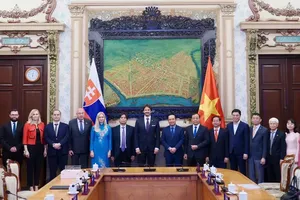
Attending the event held at Nga Ba Giong National Historical Site in Ba Diem Commune were Secretary of the Ho Chi Minh City Party Committee Tran Luu Quang, Standing Vice Secretary of the Ho Chi Minh City Party Committee Le Quoc Phong, Chairman of the municipal People’s Committee Nguyen Van Duoc, Chairman of the People’s Council of the city Vo Van Minh, along with members of the Standing Committee of the City Party Committee and leaders of various departments and agencies of Ho Chi Minh City.
At the incense-offering ceremony, delegates paid their respects and observed a moment of commemoration to honor the significant contributions of President Ho Chi Minh, former leaders of the Party and State, martyrs, and the people who heroically sacrificed their lives for the cause of national liberation and reunification.
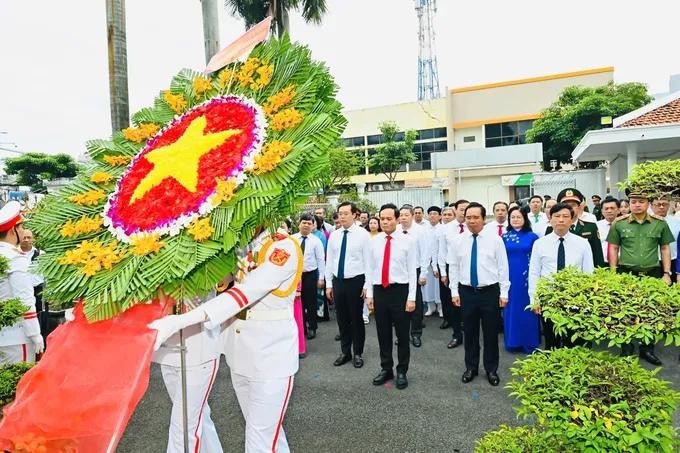
The Nga Ba Giong War Martyrs Monument, covering around 10 hectares in the former Hoc Mon District’s Xuan Thoi Thuong Commune, was recognized as a national historical relic site on December 30, 2002. It was a place where the French colonialists executed 903 Party members and patriots who joined the Nam Ky Uprising, such as Ha Huy Tap, Nguyen Van Cu, Vo Van Tan, Nguyen Thi Minh Khai, Phan Dang Luu, and others. The historic uprising, which broke out on November 23, ran in the final weeks of 1940.
On the same day, the Ho Chi Minh City delegation continued to pay tribute with flowers and incense at the Southern Uprising Monument and the National Historical and Cultural Site of Dinh Quan (the District’s Old Palace) in the former Hoc Mon District.
During the 1940 Southern Uprising, revolutionary forces advanced from four directions to attack the Hoc Mon garrison, where subprefect Bui Ngoc Tho was stationed. Faced with the overwhelming strength of the insurgents, the soldiers in the garrison quickly disbanded. The red flag with the hammer and sickle not only symbolized victory but also served as a powerful morale booster for the revolutionaries and the local population rising to seize power.
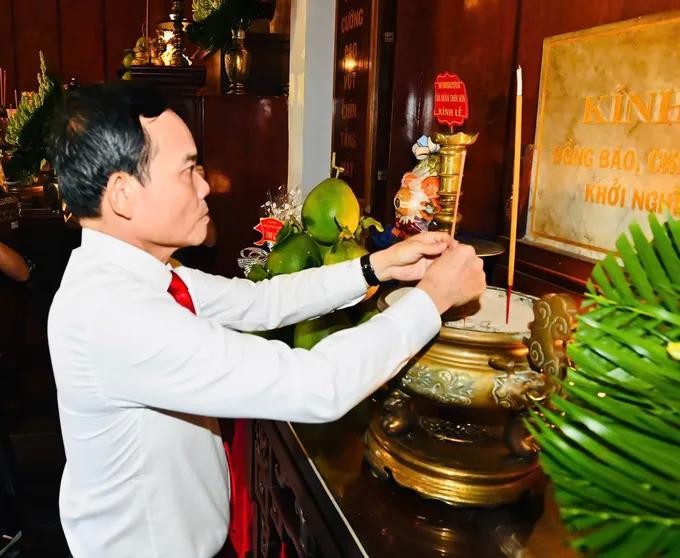
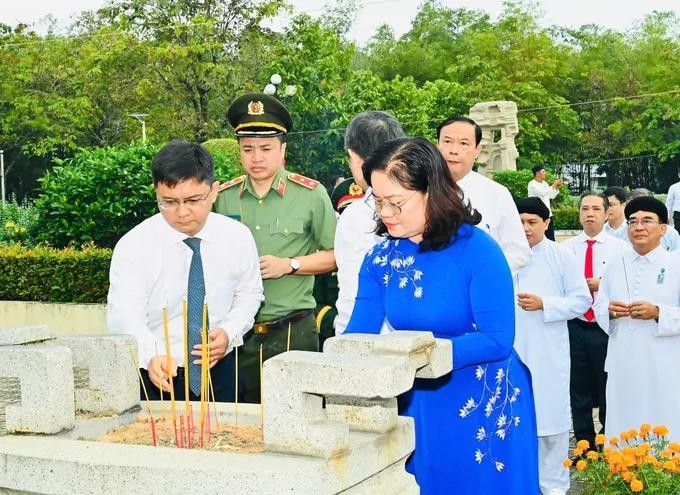
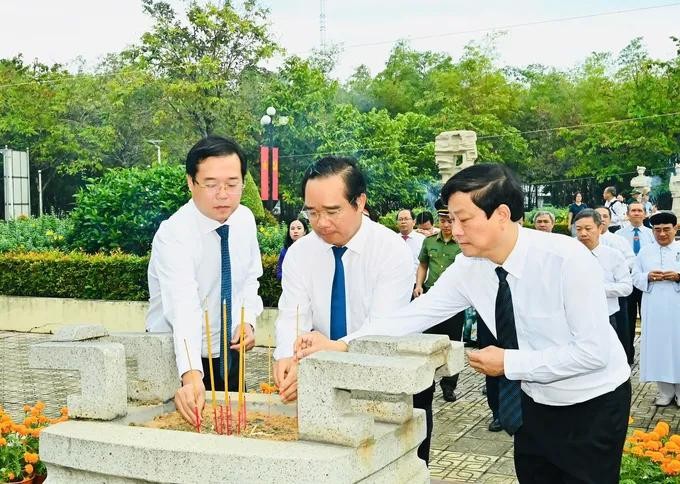

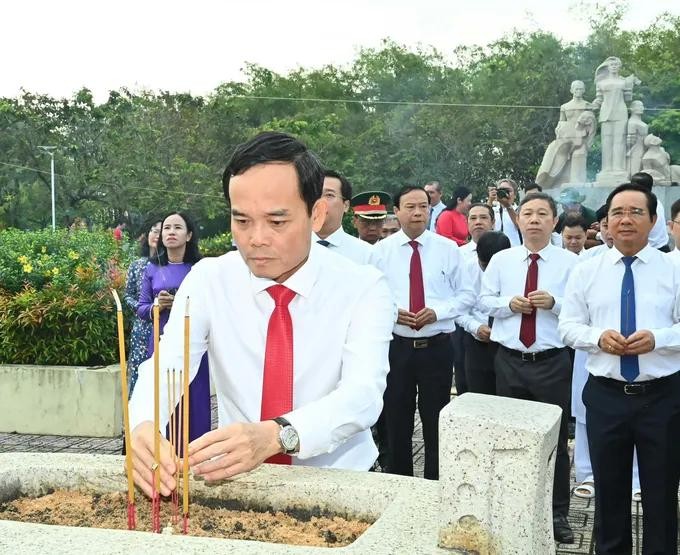

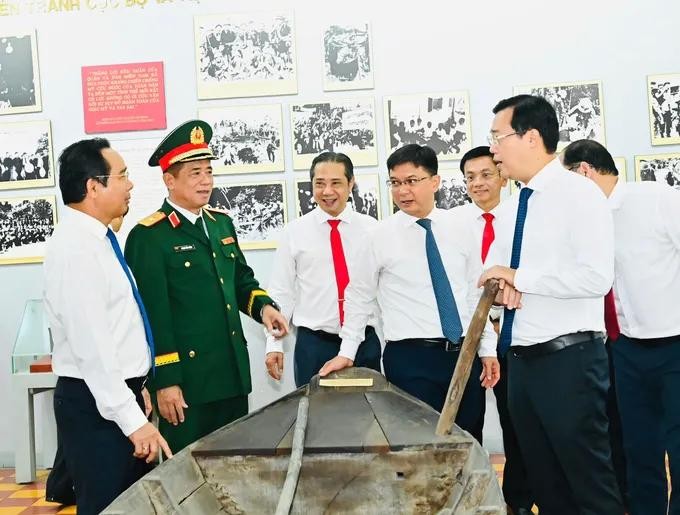
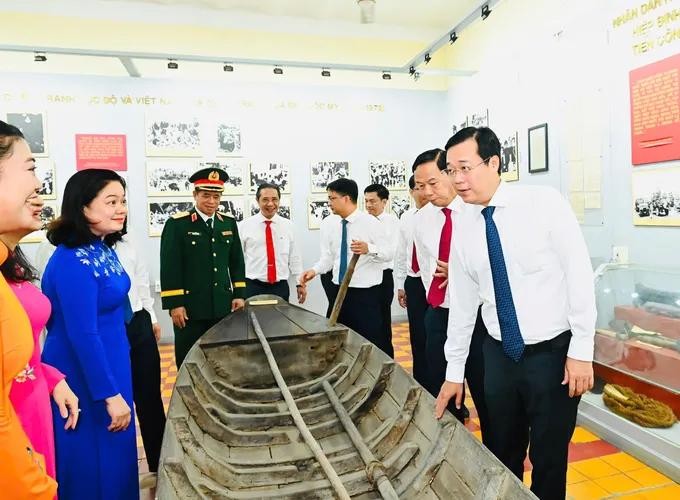

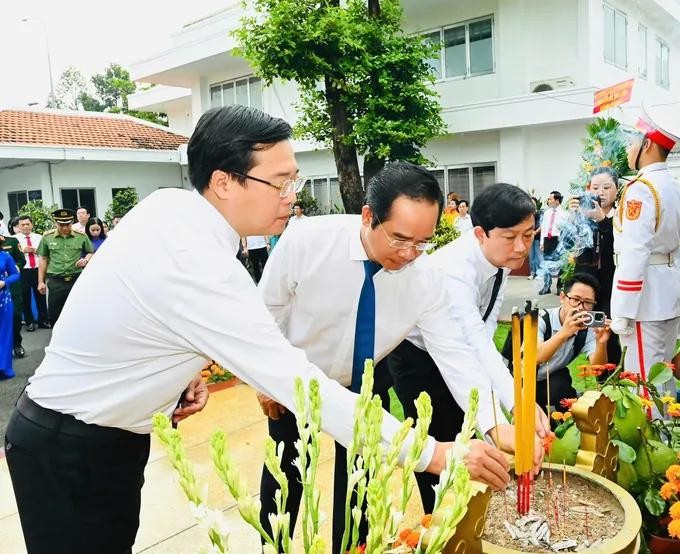
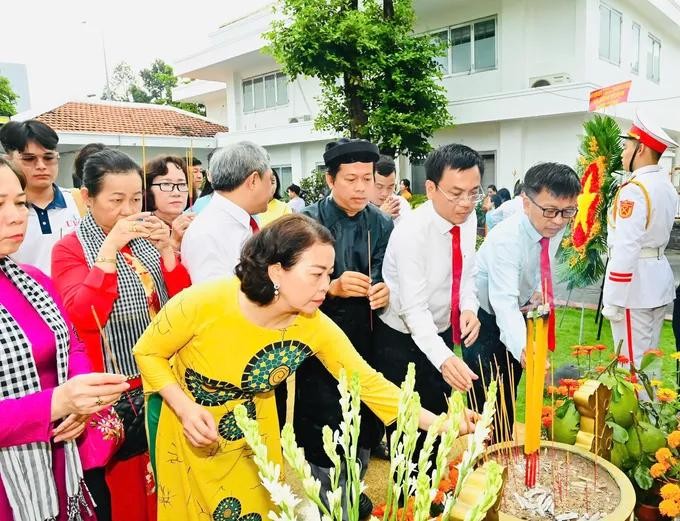
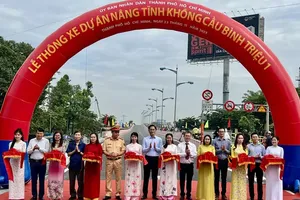


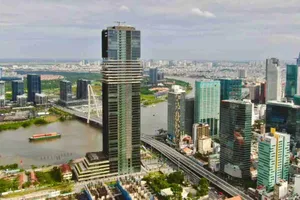
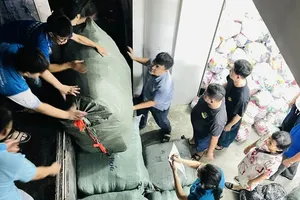
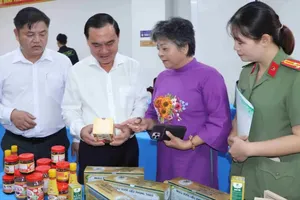
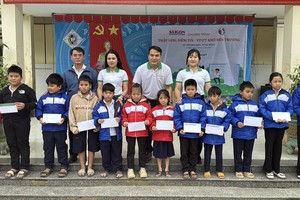


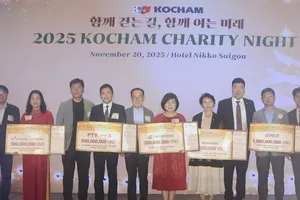
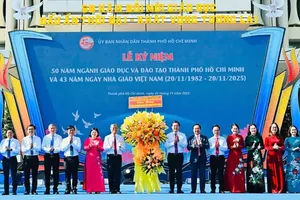
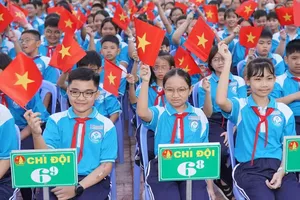
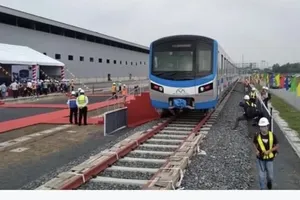
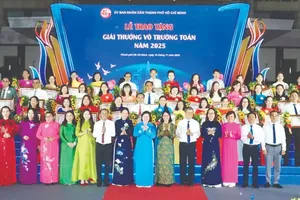

)
